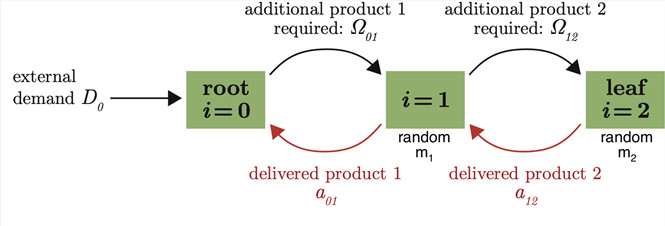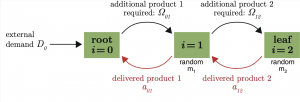An article by Y. Feld and M. Barthelemy of the Institut de Physique Théorique sheds light on the hidden dynamics that govern supply networks—those complex systems that deliver materials to producers and consumers every day.

The authors developed a model to simulate how goods flow through supply chains when production capacities are unpredictable. They found that when firms hold no buffer stock, the slowest producer sets the pace for the entire system, and the overall structure of the network hardly matters. But once stockpiles are introduced, the picture changes dramatically: the layout of the supply network becomes crucial, with past shortages echoing forward in time. Companies therefore benefit from designing supply chains that are wide and shallow—connecting to many suppliers directly—rather than deep and narrow ones.
This insight could help industries build more resilient and efficient supply systems in an era of growing global uncertainty.
The study “Critical Demand in a Stochastic Model of Flows in Supply Networks” by Y. Feld and M. Barthelemy is now published.
https://journals.aps.org/prl/abstract/10.1103/PhysRevLett.134.217401


